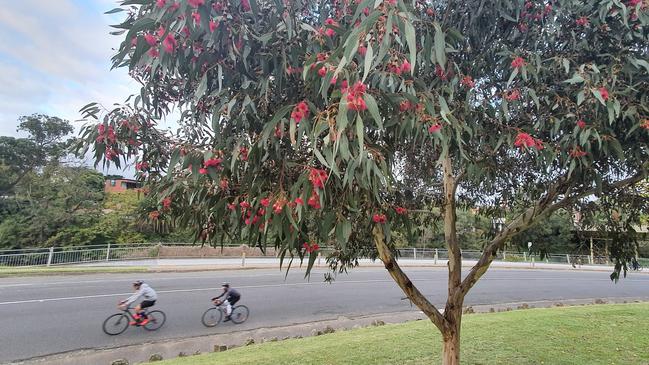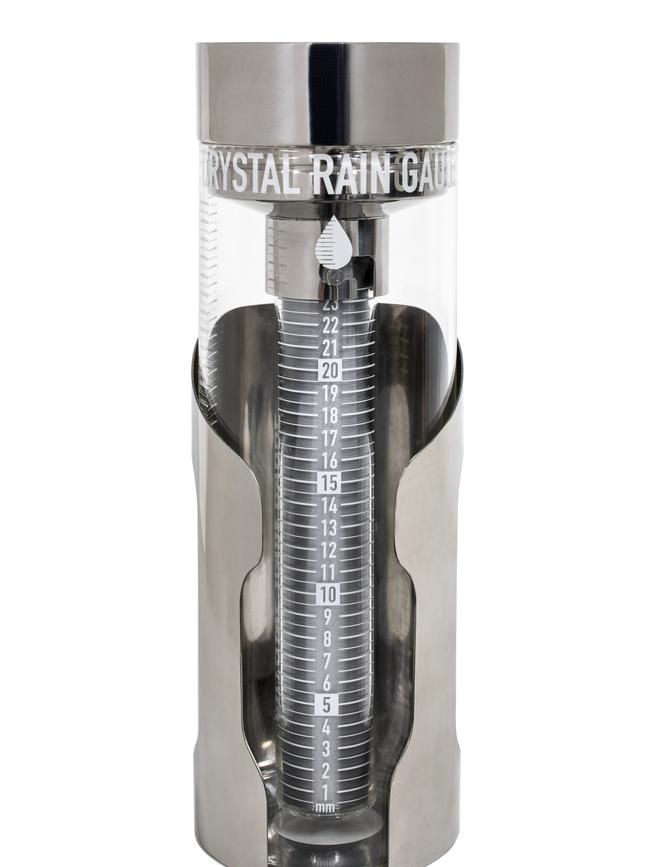Dwarf gums: good things come in small packages
A gum tree in the back yard? Great idea. Don’t be put off by visions of forest giants – there are many lovely dwarf varieties.

A gum tree in the back yard? Great idea. Don’t be put off by visions of forest giants – there are many lovely dwarf varieties whose attributes include fast growth, low water use, low maintenance and a light canopy that filters sunlight rather than blocking it. Best of all are the spectacular, nectar-rich flowers; as I write this, I’m watching lorikeets feasting on the huge trusses of blooms weighing down the branches of my Corymbia ‘Summer Red’.
Gum trees comprise about 900 species across three closely related genera: Eucalyptus, Corymbia and Angophora. What you call small is subjective, but let’s pick a maximum height of about 6m, acknowledging that growth varies depending on climate, soil and care. Most species with spectacular flowers are from Western Australia and South Australia, and don’t grow reliably on the east coast. To get around this, some such as Corymbia ‘Summer Red’ are grafted onto rootstocks of more suitable species, such as spotted gum (C. maculata). ‘Summer Red’ is a hybrid between two WA species, C. ficifolia and C. ptychocarpa; it grows about 5m tall, has prolific blooms that drip with nectar, and develops huge gumnuts. (Pruning after flowering directs the tree’s energy into growth and flowers next year.) Similar varieties from 3-7m tall include pink ‘Summer Beauty’ and ‘Baby Orange’.
Other small gum trees are dwarf forms of various species. Eucalyptus ‘Little Spotty’ is a slender, 5-7m-tall form of E. mannifera from south-eastern Australia with cream flowers most of the year. It suits cool temperate, subtropical and arid climates, and is frost tolerant. E. leucoxylon ‘Euky Dwarf’ is similar for size and climate but flowers from autumn to mid-December in red, pink or cream. E. olivacea ‘Summer Scentsation’ has large, yellow-green flowers from Christmas to autumn with the bonus of perfume. For extreme cold, choose a dwarf snow gum, E. pauciflora ‘Little Snowman’.
Naturally petite species under 5m from WA include the beautiful fuchsia gum (E. forrestiana), bell-fruited mallee (E. preissiana), mottlecah (E. macrocarpa), with huge pink flowers, and coral gum (E. torquata). In NSW, there’s the dwarf apple, Angophora hispida, from the Hawkesbury region, offering cream flowers and reddish, hairy new growth.
Q&A
After decades of growing well, all my roses are suffering from rose canker for the second year. I’ve sprayed with Mancozeb, fertilised and watered, to no avail. Charmaine Cook, Perth
This fungus enters through wounds from pruning, causing progressive dieback down the stems. It can be spread by rain. The only treatment is to cut it out, pruning well below the diseased parts. There is no registered chemical treatment. Always disinfect secateurs with mild bleach or methylated spirits between bushes, keep blades sharp, and make slanting cuts just above a node.
We have many citrus trees, on which we used to use Confidor to treat stink bugs. I understand this product is no longer available, so what can we use? Peter Russell, Sydney
Confidor was never approved for use on food plants, as the active chemical stays in the whole plant for months. Since Bunnings stopped selling such neonicotinoids because of their impact on bee populations, they are hard to buy (although still legal for non-food plants). Yates Nature’s Way Citrus & Ornamental Spray is organic and works on contact. Or you can knock bugs with a stick into a bucket of soapy water to drown. Wear eye protection, as their stinky spray is caustic.
My limes this year are smaller, dry and have a brownish tinge when cut. What can I do? Anonymous, by email
It’s likely to be boron deficiency – common on sandy soils – but could be from water stress or poor nutrition. Apply a trace element mix that includes boron. Use an organic-based citrus fertiliser every month and keep evenly watered.

Send your questions to: helenyoungtwig@gmail.com or Helen Young, PO Box 3098, Willoughby North, NSW 2068; helenyoung.com.au. The best question for March wins an Australian-designed Crystal Rain Gauge of marine stainless steel and glass, worth $80, which records up to 200mm. crystalraingauge.com.au




To join the conversation, please log in. Don't have an account? Register
Join the conversation, you are commenting as Logout